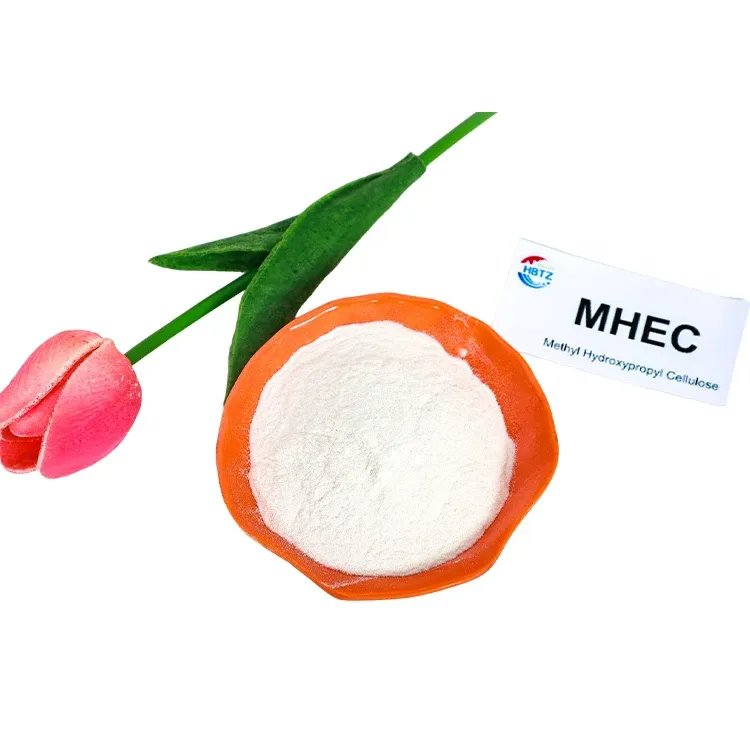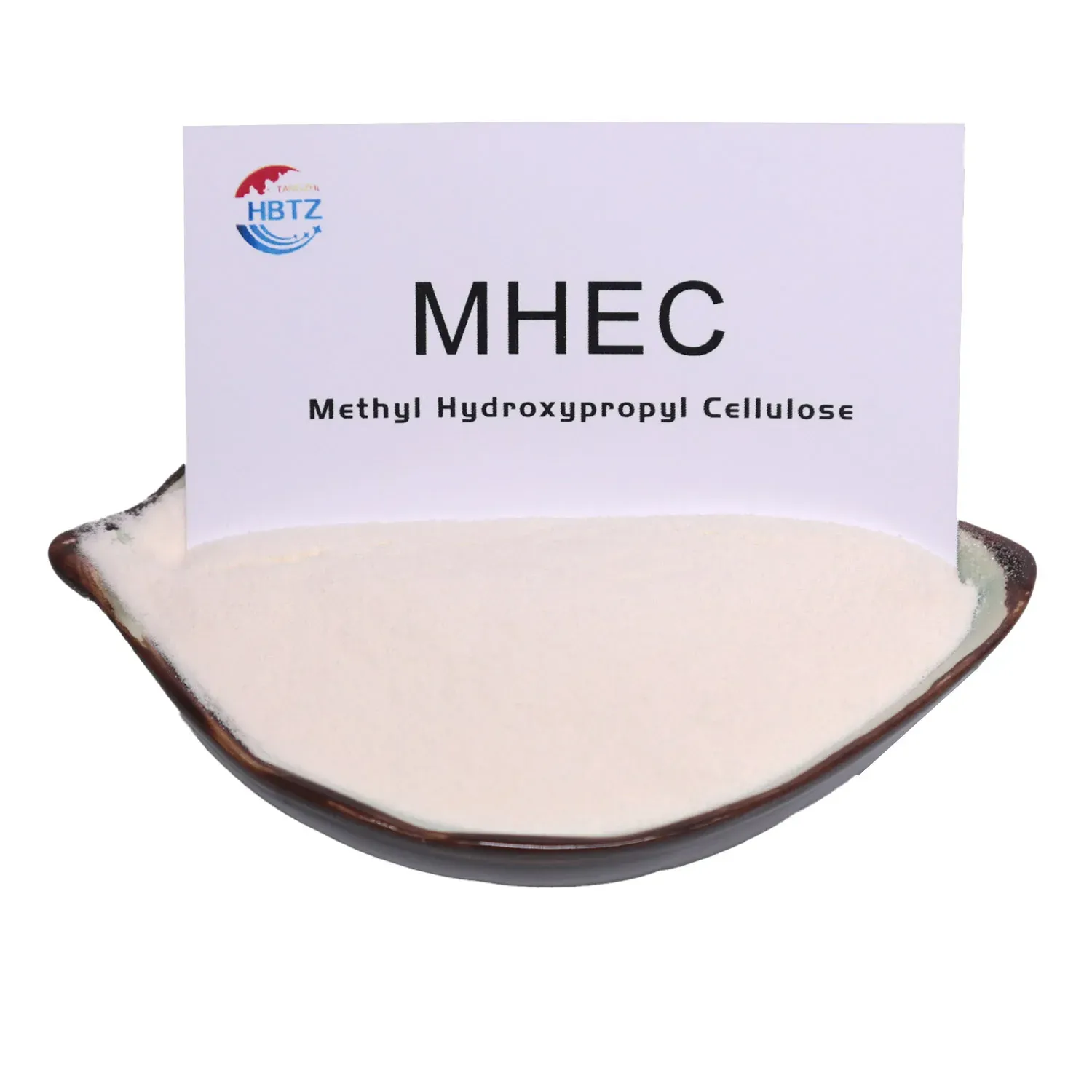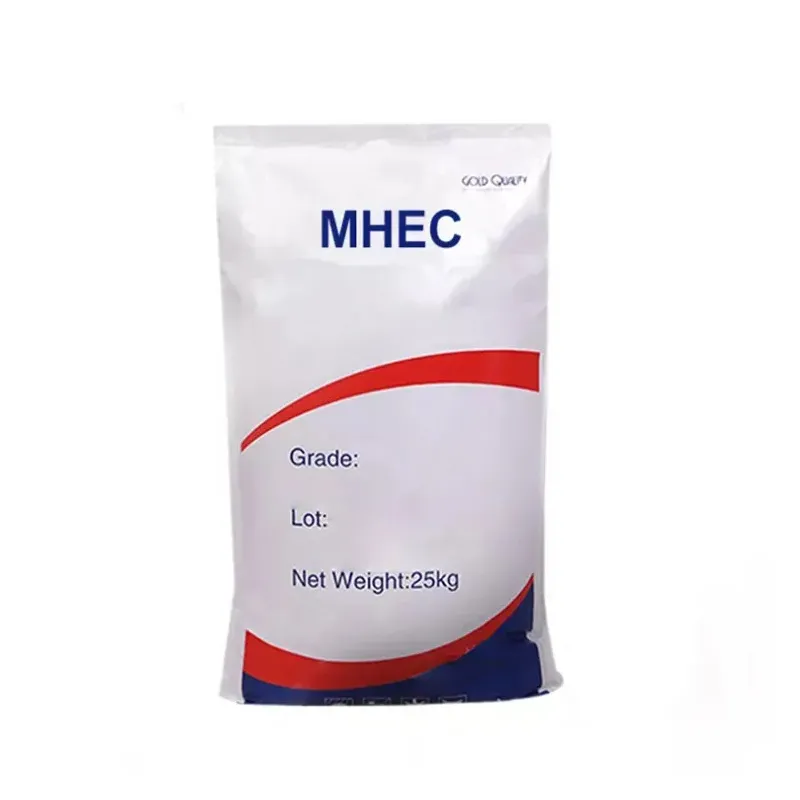Hebei Tangzhi Technology Co., Ltd.

MHEC Cellulose Premium Additive | Enhanced Industrial Uses
Aug . 01, 2025 10:20
Back to list
MHEC Cellulose Premium Additive | Enhanced Industrial Uses
In-depth exploration of mhec cellulose materials, pricing dynamics, technical comparison, and industry use-cases.
1. Global MHEC Cellulose Market Trends
The mhec cellulose market is experiencing steady growth driven by demand in construction, paints, coatings, pharmaceuticals, and personal care. According to Grand View Research, the global cellulose ether market (including MHEC) was valued at over USD 5.32 billion in 2023 and is projected to grow at a CAGR of 5.6% through 2030. Asia-Pacific leads in consumption owing to rapid infrastructure developments.
| Parameter | MHEC Cellulose | Hydroxypropyl Methyl Cellulose (HPMC) | Hydroxymethyl Ethyl Cellulose (HEMC) | Methyl Hydroxyethyl Cellulose Price (USD/kg) |
|---|---|---|---|---|
| CAS No. | 9032-42-2 | 9004-65-3 | 9004-62-0 | 2.7 ~ 3.3 (2024 Q2, FOB) |
| Viscosity (2%, 20°C, mPa.s) | 5,000–80,000 | 5,000–200,000 | 4,000–100,000 | - |
| Moisture (%) | <5.0 | <5.0 | <5.0 | - |
| Industry | Construction, Paints, Detergent | Pharma, Foods, Construction | Paints, Mortars | - |
| Standards | ISO, ANSI, ASTM | USP, ISO | ISO, ASTM | - |
The methyl hydroxyethyl cellulose price fluctuates based on purity, viscosity, packaging, and region, with top exports from China, Germany, and the USA. In 2024, end-users are increasingly seeking cost-performance optimized solutions, with advanced grades such as hydroxymethyl ethyl cellulose making inroads into specialty coatings and adhesives.

Packaged mhec cellulose products ready for shipment
2. Technical Specifications of Hydroxyethyl Methyl Cellulose (MHEC)
Hydroxyethyl Methyl Cellulose (mhec cellulose) is a non-ionic, water-soluble polymer derived from natural cellulose and chemically modified with methyl and hydroxyethyl groups. Its optimized molecular structure delivers robust thickening, water retention, and film formation properties, making it indispensable in cement renders, tile adhesives, and water-based paints.
| Characteristic | Typical Value | Industry Standard |
|---|---|---|
| Appearance | White to off-white powder | ISO 9001:2015 |
| Moisture Content (%) | <5.0 | ISO/FDIS 16634-2 |
| pH (2% solution) | 6.0–8.5 | ASTM D1200 |
| Viscosity (2%, 20°C, mPa.s) | 20,000–80,000 | DIN EN ISO 2555 |
| Loss on Drying (%) | <6.0 | ISO 638 |
| Gel Temperature (°C) | 60–82 | ASTM E659 |
| Residue on Sieve (180μm, %) | <2.0 | ISO 565 |
MHEC Cellulose vs. HPMC vs. HEMC – Viscosity & Water Retention (%)
3. MHEC Cellulose Manufacturing Process (Flowchart & Key Controls)
Process Steps:
(Quality checkpoints marked, ISO process controlled)

Alkali Cellulose Preparation
→
Methylation/Ethylation
→
Etherification ★
→
Neutralization & Washing
→
Centrifugation / Drying
→
Screening & Packaging ★

Certified plants run mhec cellulose processes per ISO & ANSI specifications. Key quality nodes: Etherification (uniform substitution), Final Sieve (particle size distribution).
The entire production line leverages batch reactors, advanced CNC-controlled dryers, and real-time inline moisture measurement (NIR), ensuring batch-to-batch reproducibility and regulatory compliance. Major industry certifications include ISO 9001:2015 and selected FDA/REACH compliance for food/pharma-grade mhec cellulose.

CNC automated reactors for strict process control in hydroxymethyl ethyl cellulose production
4. Main Application Areas and Performance Benefits
- Construction Mortar & Renders: Enhanced workability, superior water retention, anti-sagging. Reduces cracking and improves open time—ideal for dry mix formulations.
- Tile Adhesives: Consistent rheology, excellent slip resistance. MHEC’s thickening and binding allow for thinner adhesive beds and easier leveling.
- Paints & Coatings: Acts as a stabilizer & rheology modifier. Provides smooth application, anti-splatter, prevents pigment sedimentation.
- Personal Care & Detergents: Mild, viscosity-enhancing, non-toxic. Used in shampoos, hand-wash gels, soap bars for thickening and emulsion stabilization.
- Pharmaceuticals: Employed as sustained-release excipient, binder, and film-former in tablets & coatings. Complies with pharmacopoeia standards (USP, EP).

Application of methyl hydroxyethyl cellulose in water-based construction paints
5. Typical User Case: Energy-Efficient High-rise Facade Mortar
Project: Shanghai International Finance Center (2023)
Specification: mhec cellulose (viscosity 65K, purity >98.7%)
Result: Improved water retention by 2.1%, reduced surface cracking by 36%, extended open time by 25min (tested per EN 1015-19).
Feedback: “The consistency and workability outperformed previous HEMC grades, reducing cold-joint failures for our vertical applications.”—Lead Site Engineer.
Specification: mhec cellulose (viscosity 65K, purity >98.7%)
Result: Improved water retention by 2.1%, reduced surface cracking by 36%, extended open time by 25min (tested per EN 1015-19).
Feedback: “The consistency and workability outperformed previous HEMC grades, reducing cold-joint failures for our vertical applications.”—Lead Site Engineer.
Service life extension and anti-corrosion performance have been verified via accelerated weathering chambers (ASTM D2247). Multiple contractors highlight lower consumption rates compared to cheaper methyl hydroxyethyl cellulose options, confirming optimal long-term cost.
Industry Share of MHEC Cellulose Consumption (2024, %)
6. Manufacturer Benchmark: Tangzhi HPMC vs. Leading Global Brands
| Brand | Certification | QC System | Viscosity (2%, 20°C) | Support | Delivery Cycle | MOQ (KG) |
|---|---|---|---|---|---|---|
| Tangzhi HPMC | ISO, SGS, CNAS | 100% Online, NIR/Moisture | 5,000–80,000 mPa.s | Custom grade, 24h response | 12–21 days* | 500 |
| Ashland | ISO, FDA (selected) | In-process/Final | 20,000–120,000 mPa.s | Standard | 21–30 days | 1,000 |
| Dow | ISO, USP | Batch QC | 5,000–100,000 mPa.s | Standard | 30 days+ | 500 |
* Custom packaging, tailored viscosity, and unique substitution levels by Tangzhi HPMC on request. Industry-leading online moisture monitoring and traceable batch numbers ensure product consistency.
Methyl Hydroxyethyl Cellulose Price Trend (USD/kg, 2022–2024, FOB China)
7. MHEC Customization & Service Solutions
8. Quality Assurance & After-sales Commitment
Quality Promise: Each batch of mhec cellulose is shipped with a Certificate of Analysis referencing ISO/ASTM standards, traceable lot codes, and full QC data (moisture, viscosity, substitution level, pH). All products undergo strict anti-contamination protocols and batch archiving for 8+ years.
Delivery: Standard lead time 12–21 days after order confirmation; express sample shipping within 3–6 days.
Warranty: 2–3 years (sealed packaging); extended for GMP grades.
Customer Support: 24/7 online technical support, rapid claims response, on-site industrial troubleshooting.
Delivery: Standard lead time 12–21 days after order confirmation; express sample shipping within 3–6 days.
Warranty: 2–3 years (sealed packaging); extended for GMP grades.
Customer Support: 24/7 online technical support, rapid claims response, on-site industrial troubleshooting.
Frequently Asked Questions: MHEC Cellulose (Technical & Application)
- Q1: What is the chemical structure and functional group in mhec cellulose?
- A1: It is a cellulose ether, featuring methyl and hydroxyethyl substituents on the anhydroglucose backbone. This modification enhances water solubility, thickening, and film formation compared to unmodified cellulose.
- Q2: What are the available viscosity grades for construction applications?
- A2: Standard supply ranges from 5,000 to 80,000 mPa.s (2% solution, 20°C), suitable for tile adhesives, renders, and EIFS mortars. Grade selection affects thixotropy and open time.
- Q3: Does hydroxymethyl ethyl cellulose differ in application from MHEC?
- A3: Yes. HEMC usually offers higher water retention and is used in formulations needing slow setting or premium anti-sag qualities, but with similar processing methods.
- Q4: Does your MHEC meet ISO/ASTM standards? Which?
- A4: All products comply with ISO 9001:2015, ASTM D1200 (viscosity), ASTM E659 (gel temp), and can be produced to FDA CFR 21 (for pharma/food), and EN 1015 (building mortars).
- Q5: What is the particle size specification, and how does it affect performance?
- A5: D50 particle size is typically 80–160 μm; finer grades enable faster dissolution, smoother blends, reduced lumping—critical for spray-applied renders.
- Q6: How is methyl hydroxyethyl cellulose price determined?
- A6: Price depends on raw material cellulose price, viscosity grade, purity, quantity, and packaging. Custom high-viscosity or GMP grades are typically at a premium (USD 2.7–3.3/kg FOB, Q2 2024).
- Q7: Is MHEC hazardous or restricted for export/import?
- A7: MHEC is classified as non-hazardous, not subject to ADR/IMDG restrictions—shippable worldwide. Food/pharma grade requires corresponding regulatory documentation.
Conclusion & Industry References
The rapid advancement and market adoption of mhec cellulose—driven by innovative process control, custom product engineering, and strict adherence to global standards (ISO, ASTM, EN)—is reshaping industries across construction, coatings, and pharmaceuticals. By benchmarking technical data, price trends, and customer feedback, we see hydroxyethyl methyl cellulose solidifies its position as the performance cellulose ether of choice.
References:
- “Global Cellulose Ether Market Report (2024–2030),” Grand View Research
- “Cellulose Ethers in Construction: Performance and Practice,” Cellulose Ether Forum
- “EN 1015-19 Test Results: Mortar Open Time Evaluation,” Cement & Concrete Research Journal
- Official Tangzhi Hydroxyethyl Methyl Cellulose Product Page
Latest news
-
Reliable Powdered Cellulose Supplier: Quality, Sustainability & InnovationNewsNov.24,2025
-
Find Trusted Microfibrillated Cellulose Suppliers for Sustainable Industrial SolutionsNewsNov.24,2025
-
Leading Methocel Suppliers: Quality, Innovation & Sustainability in Methylcellulose SupplyNewsNov.23,2025
-
Reliable Hydroxyethylcellulose Suppliers for Industry & Sustainability | Tangzhi HPMCNewsNov.23,2025
-
Top Ethyl Cellulose Supplier – Quality, Sustainability, and Industrial SupportNewsNov.23,2025
-
Trusted CMC Powder Suppliers for Food, Pharma & Industrial Use | Tangzhi HPMCNewsNov.22,2025





















